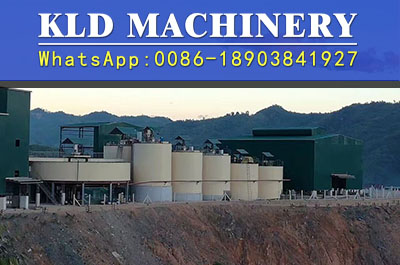Mineral properties and deposit types of copper
2020-11-13 10:33Introduction:Mineral properties and deposit types of copper In nature, there are more than 170 types of copper known, but only a dozen have industrial applications.Copper content in the earths crust is 0.01% on average.In terms of geochemical property,
In nature, there are more than 170 types of copper known, but only a dozen have industrial applications.Copper content in the earth's crust is 0.01% on average.In terms of geochemical property, copper belongs to a family of sulfurous elements, so copper minerals often appear as sulfide.All kinds of copper materials can be divided into primary sulphide, such as chalcopyrite, according to their origin and chemical composition.Secondary copper sulfide, such as chalcocite;And copper oxide minerals, such as malachite.Copper has a certain degree of iron affinity. On the periodic table, copper and iron elements are adjacent to each other, especially close to nickel. Therefore, during the magmatic stage, copper in basic and superbasic magma can be fused together with iron, nickel and cobalt elements.
The world is rich in copper resources, and the country with the largest copper reserves is the United States, followed by Chile and the Soviet union.China is also one of the countries rich in copper resources.The United States, the Soviet union, Chile, Canada and Zambia are the world's major copper producing countries.

Worldwide, the most important types of industrial copper deposits are porphyry, copper - bearing sandstone, copper-pyrite and copper - nickel sulphide.Porphyry copper deposits account for more than half of the world's copper reserves.Many megaton plants deal with porphyry copper, which accounts for 90% of the copper in the United States and Peru.
The copper deposits in China mainly include porphyry copper ore, copper-pyrite, stratified copper ore, skarn copper ore, copper sandstone copper ore, cupr-nickel sulphide ore and vein copper ore.Although skarn copper mine is small in scale, it is rich in copper. It is produced in northeast China, north China, middle and lower reaches of the Changjiang river and northwest China, and occupies a certain position in the copper industry.
About industrial types of copper ores, there are different classification methods:
1. According to the relative content of copper oxide in the ore, it can be divided into copper oxide ore (oxidation rate > 30%), mixed sulfide - copper oxide ore (oxidation rate 10 ~ 30%), and copper sulfide ore (oxidation rate < 10%).
2. According to the structure of ore, it can be divided into massive (compact) copper ore and disseminated copper ore.
3. The ore can be divided into single copper ore and composite copper ore (such as copper sulfur ore and copper nickel ore) according to the valuable components.
In this chapter, copper sulphide ores are divided into three types, namely single copper sulphide ores, copper sulphide ores and copper iron ores, based on the valuable groups in the ores and combined with the mineral processing technology (see table 1-1).
As for copper-zinc ore, copper-lead-zinc ore, copper-nickel ore, copper-cobalt ore, copper-molybdenum ore and so on, they are described in other chapters.
Copper sulphide ores are generally easy to be processed.But the same ore often contains several copper minerals.There are some differences in copper content, overgrinding, interaction with oxygen, collector and regulator, and the requirement of optimum pH of flotation.Therefore, the type of copper in ore has a certain influence on the mineral processing index, sometimes even a great influence.For example, when there is a large amount of chalcocite and natural copper in the ore, the concentrate grade can be easily improved, and some even reach more than 70% (such as the Coro Coro copper ore beneficiation plant in Bolivia, South America).
In copper sulphide, there are some iron sulfide minerals.The content, floatability and the symbiotic relationship with sulfide minerals directly affect the flotation indexes of copper, which is a common problem in the flotation of copper sulfide ores.
Types of copper sulfide ores (table 1-1)
|
Ore type |
Recovered valuable components |
Ore characteristics |
floatability |
Types of ore deposits |
|
single copper sulphide ores |
copper |
Pyrite content is less, the copper is more simple, the fineness of ore is coarse or fine,and simple, the oxidation rate is different |
good-easy |
Porphyry copper deposits, copper - bearing sandstone deposits, vein copper deposits, stratiform copper deposits |
|
copper sulphide ores |
Copper, sulfur |
There are many pyrite (15 ~ 90%), complex copper, fine grain of camber, impurities such as lead and zinc |
good-diffficult |
Copper-pyrite deposits, skarn copper deposits |
|
copper iron ores |
Copper, iron (sulfur) |
More iron oxide (15 ~ 70%), less pyrite, more can be recycled.Copper is more complex and has a fine grain.Some contain more slime |
good-easy |
Skarn copper deposit |
Copper sulphide ores often contain a certain amount of gold and silver, and some contain elements such as molybdenum, cobalt, rhenium, indium, bismuth, arsenic and tellurium in small amounts but with high economic value.Comprehensive recycling should be carried out in the process of beneficiation and smelting. The harmful impurities such as arsenic, antimony, phosphorus and manganese contained in the ore should be removed in the process of beneficiation and smelting.
The common gangue minerals in copper sulfide are mainly quartz, followed by calcite, barite, dolomite, sericite, feldspar, chlorite, etc.In copper iron ore, garnet, diopside and actinite, such as skarn vein stone.As the primary mineral slime containing magnesium-containing ore and chlorinated and sericized mineral slime have great influence on flotation indexes, it should be considered carefully when formulating flotation process and selecting flotation agents.

